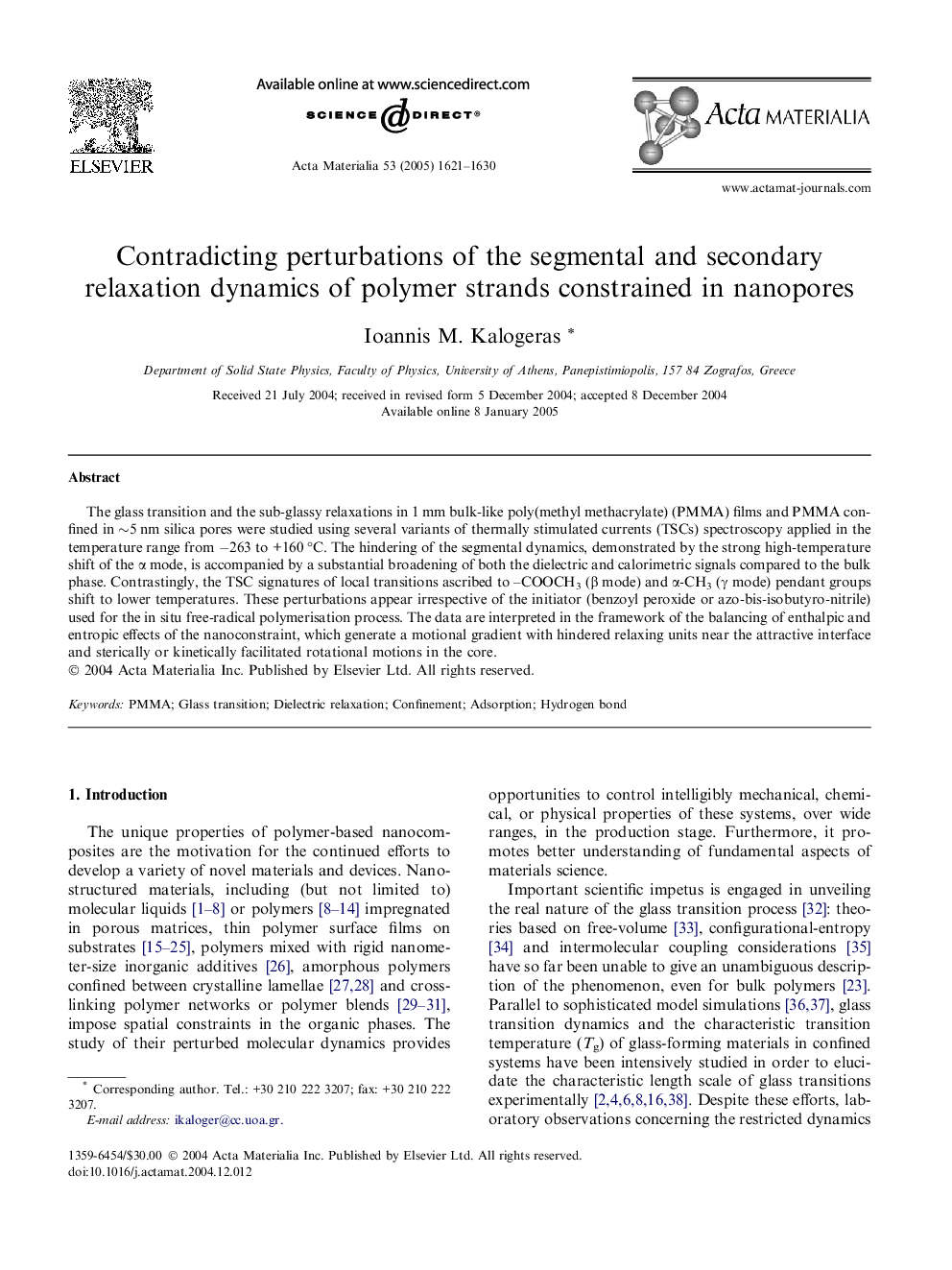| Article ID | Journal | Published Year | Pages | File Type |
|---|---|---|---|---|
| 10621108 | Acta Materialia | 2005 | 10 Pages |
Abstract
The glass transition and the sub-glassy relaxations in 1 mm bulk-like poly(methyl methacrylate) (PMMA) films and PMMA confined in â¼5 nm silica pores were studied using several variants of thermally stimulated currents (TSCs) spectroscopy applied in the temperature range from â263 to +160 °C. The hindering of the segmental dynamics, demonstrated by the strong high-temperature shift of the α mode, is accompanied by a substantial broadening of both the dielectric and calorimetric signals compared to the bulk phase. Contrastingly, the TSC signatures of local transitions ascribed to -COOCH3 (β mode) and α-CH3 (γ mode) pendant groups shift to lower temperatures. These perturbations appear irrespective of the initiator (benzoyl peroxide or azo-bis-isobutyro-nitrile) used for the in situ free-radical polymerisation process. The data are interpreted in the framework of the balancing of enthalpic and entropic effects of the nanoconstraint, which generate a motional gradient with hindered relaxing units near the attractive interface and sterically or kinetically facilitated rotational motions in the core.
Related Topics
Physical Sciences and Engineering
Materials Science
Ceramics and Composites
Authors
Ioannis M. Kalogeras,
